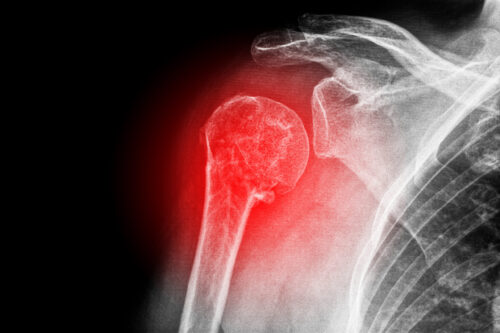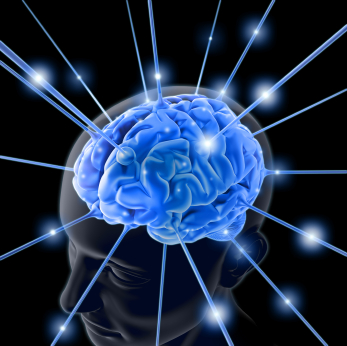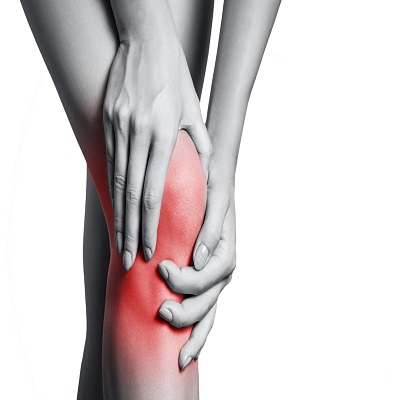Relief From Whiplash: Natural Healing Without Drugs or Surgery
What Happens During a Whiplash Injury
Your head snaps forward and then backward in a split second. This sudden, violent motion happens during car accidents, sports collisions, or falls. Consequently, the soft tissues in your neck get stretched and torn beyond their normal limits. This painful condition is called whiplash, and it affects thousands of people every year.
Whiplash injuries damage the muscles, ligaments, tendons, and nerves in your neck. Moreover, the force can also injure the joints between your vertebrae and even cause mild concussions. Many people don’t realize how serious whiplash can be because symptoms sometimes don’t appear until hours or even days after the injury.
At the Chronic Conditions Center in Bethel Park, PA, we specialize in providing relief from whiplash using natural, conservative treatments. Furthermore, our approach addresses the complete injury rather than just masking your pain with medications. Most importantly, we help your body heal properly so you don’t develop chronic problems later.
Recognizing Whiplash Symptoms
Understanding whiplash symptoms helps you recognize when you need treatment. Initially, you might feel fine right after an accident. However, symptoms typically develop within 24 hours and can include several warning signs.
Neck pain and stiffness are the most common complaints. Additionally, you might experience headaches that start at the base of your skull and radiate forward. Similarly, shoulder pain and upper back pain often accompany whiplash injuries. Furthermore, many people feel dizzy, fatigued, or have difficulty concentrating.
Some patients also experience more concerning symptoms. For instance, tingling or numbness in your arms suggests nerve involvement. Meanwhile, blurred vision, ringing in your ears, or trouble sleeping indicate more significant injury. Therefore, seeking prompt treatment becomes crucial for complete recovery.
Why Quick Treatment Matters
Getting relief from whiplash quickly prevents long-term complications. When whiplash injuries don’t heal properly, scar tissue forms in abnormal patterns. Consequently, this scar tissue restricts your neck movement and causes chronic pain. Additionally, untreated whiplash can lead to degenerative arthritis in your neck joints years later.
Many people make the mistake of waiting to see if symptoms improve on their own. Unfortunately, this approach often backfires. Without proper treatment, inflammation persists and muscles remain tight. Subsequently, your body compensates by developing poor movement patterns. These compensations create additional problems throughout your spine and shoulders.
Moreover, research shows that people who receive appropriate treatment soon after injury recover faster and more completely. In contrast, those who delay treatment often struggle with symptoms for months or even years. Therefore, early intervention provides the best opportunity for achieving complete relief from whiplash.
The Problem with Conventional Treatment
Most people who suffer whiplash injuries visit their regular doctor or emergency room. Typically, they receive pain medications, muscle relaxers, and advice to rest. While these recommendations might provide temporary comfort, they don’t promote proper healing.
Pain medications only mask symptoms without addressing the underlying damage. Additionally, muscle relaxers make your muscles weak and don’t help them heal correctly. Furthermore, too much rest actually slows recovery because movement helps bring healing nutrients to injured tissues.
Some doctors recommend wearing a soft collar for support. However, research has shown that prolonged collar use weakens neck muscles and delays recovery. Similarly, simply waiting for time to heal whiplash often results in incomplete healing and lingering symptoms.
Surgery is rarely needed for whiplash injuries. Nevertheless, some patients undergo unnecessary procedures when conservative treatment would work better. These surgeries carry significant risks and don’t guarantee relief from whiplash. Therefore, we believe in trying natural approaches first.
Our Conservative Approach to Whiplash Recovery
At the Chronic Conditions Center in Bethel Park, we use a comprehensive treatment plan that addresses all aspects of whiplash injury. Specifically, we combine chiropractic care, Trigenics, laser therapy, shockwave therapy, and soft tissue techniques. Together, these treatments provide effective relief from whiplash while promoting complete healing.
Our approach differs from conventional medical care in several important ways. First, we focus on restoring normal function rather than just reducing pain. Next, we use natural therapies that support your body’s healing abilities. Additionally, we treat the whole injury—not just the most painful area. Most importantly, our methods help prevent chronic problems from developing later.
Chiropractic Care: Restoring Proper Alignment
Chiropractic treatment forms the foundation of our relief from whiplash program. Whiplash injuries often misalign the vertebrae in your neck and upper back. These misalignments, called subluxations, interfere with normal nerve function and cause muscle tension.
During the accident, the force pushes your vertebrae out of their proper positions. Consequently, the joints between your vertebrae become stuck or restricted. This restriction prevents normal movement and creates inflammation around the joints. Furthermore, misaligned vertebrae irritate the nerves that exit your spinal cord.
How Chiropractic Adjustments Help
Our chiropractors use gentle, specific adjustments to correct these misalignments. Unlike the forceful manipulation some people fear, we use carefully controlled movements appropriate for injured tissues. These adjustments restore normal position and movement to your neck joints.
The benefits of chiropractic care for whiplash are substantial. First, adjustments reduce nerve irritation that causes pain and muscle spasms. Next, they improve joint mobility so your neck can move freely again. Moreover, proper alignment allows your muscles to relax and function normally. Additionally, adjustments stimulate healing by improving circulation to damaged tissues.
Many patients experience immediate relief from whiplash symptoms after their first adjustment. Your neck might feel looser, and sharp pains often decrease significantly. However, complete healing requires multiple treatments over several weeks. Consistency with your treatment schedule produces the best results.
Trigenics: Repairing Neuromuscular Damage
Whiplash doesn’t just injure your physical tissues—it also disrupts the communication between your nerves and muscles. This neuromuscular dysfunction explains why some people continue having symptoms long after the accident. Therefore, effective relief from whiplash must address this neurological component.
Trigenics represents an advanced treatment system specifically designed for these neuromuscular problems. This technique combines manual therapy, nerve stimulation, and active patient participation. Working together, these three elements reset the faulty signals between your brain, nerves, and muscles.
The Trigenics Treatment Process
During a Trigenics session, our specialist applies specific pressure to injured muscles. Simultaneously, you perform particular movements that we guide you through. Meanwhile, we stimulate your nerves using gentle techniques that reprogram how they communicate with your muscles.
This unique combination produces remarkable results. For instance, muscles that have been locked in spasm suddenly relax. Additionally, weak muscles that couldn’t contract properly regain their strength. Furthermore, your brain learns to control your neck movements correctly again.
Trigenics works especially well for the muscle imbalances that whiplash creates. The sudden stretching damages some muscles while others tighten protectively. Consequently, your neck develops dysfunctional movement patterns. Trigenics corrects these patterns and restores normal muscle coordination. Therefore, you achieve lasting relief from whiplash rather than temporary improvement.
Laser Therapy: Accelerating Tissue Healing
Low-level laser therapy provides another powerful tool for achieving relief from whiplash. This treatment uses specific wavelengths of light energy that penetrate deep into your neck tissues. Unlike surgical lasers that cut tissue, therapeutic lasers stimulate your cells’ natural healing processes.
The light energy enters damaged cells and increases their energy production. As a result, these cells can repair themselves much faster than normal. Additionally, laser therapy reduces inflammation throughout your neck tissues. Similarly, it improves blood flow to bring healing nutrients to injured areas.
Benefits of Laser Treatment for Whiplash
Laser therapy offers multiple advantages for whiplash patients. First and foremost, it significantly reduces pain without any medications. The light energy affects pain-sensing nerves and reduces their activity. Consequently, you feel less discomfort while your tissues heal.
Moreover, laser therapy decreases swelling and inflammation in your neck. This reduction in inflammation allows better movement and speeds healing. Furthermore, the treatment stimulates collagen production, which is essential for repairing torn ligaments and tendons.
Blood circulation improvements represent another crucial benefit. Better circulation means more oxygen reaches your injured tissues. Meanwhile, inflammatory chemicals and waste products get removed more efficiently. Therefore, healing happens much faster with laser therapy than without it.
Each laser treatment session lasts only 10-15 minutes and feels completely painless. Most patients describe a gentle warmth during treatment. You can return to normal activities immediately afterward. Best of all, laser therapy has no side effects and works synergistically with our other treatments.
Shockwave Therapy: Breaking Up Scar Tissue
Shockwave therapy delivers acoustic waves deep into your neck tissues. These powerful sound waves create controlled microtrauma that triggers your body’s healing response. Consequently, shockwave therapy proves especially effective for chronic whiplash cases where scar tissue has formed.
Scar tissue develops when injuries don’t heal properly. This abnormal tissue is thicker and less flexible than normal tissue. Moreover, scar tissue contains pain-sensitive nerve endings that cause ongoing discomfort. Therefore, breaking up this scar tissue becomes essential for complete relief from whiplash.
How Shockwaves Promote Healing
When shockwaves pass through your neck, several beneficial processes occur. First, they mechanically break apart scar tissue and adhesions. These restrictions have been limiting your neck movement and causing pain. Next, shockwaves stimulate the growth of new blood vessels in damaged areas. Better blood supply means faster healing.
Additionally, shockwave therapy reduces pain by affecting how nerves transmit pain signals. The treatment seems to “reset” hypersensitive nerves that have been overreacting. Furthermore, shockwaves trigger the release of substances that reduce inflammation throughout treated tissues.
Many patients notice improvements after just a few shockwave sessions. Your neck might feel looser and move more freely. Subsequently, pain levels decrease as scar tissue breaks down and inflammation reduces. The effects are cumulative, meaning each treatment builds on previous ones. Therefore, consistent treatment provides optimal relief from whiplash.
Soft Tissue Therapy: Releasing Muscle Tension
Whiplash injuries severely damage the soft tissues in your neck. Muscles, tendons, and ligaments get stretched, torn, and inflamed. Additionally, the fascia—connective tissue surrounding your muscles—develops adhesions and tight spots. Therefore, hands-on soft tissue therapy becomes crucial for complete recovery.
Our therapists use various specialized techniques to address these soft tissue problems. Each technique targets specific types of tissue damage. Together, they provide comprehensive relief from whiplash symptoms while promoting proper healing.
Specialized Soft Tissue Techniques
Myofascial release involves sustained pressure that melts away fascial restrictions. The therapist holds pressure on tight areas until the tissue releases and softens. Consequently, this technique restores normal tissue flexibility and reduces pain significantly.
Trigger point therapy targets specific knots in your muscles that refer pain to other areas. These trigger points commonly develop after whiplash injuries. Applying pressure to these points releases them and eliminates the pain patterns they create. Subsequently, your neck muscles can relax and function normally again.
Cross-friction massage breaks down scar tissue in injured tendons and ligaments. The therapist moves across the tissue fibers rather than along them. This technique promotes proper collagen alignment during healing. Therefore, your tissues heal stronger and more flexible than with random scar tissue formation.
Active release technique combines movement with manual pressure. The therapist applies tension to your muscle while you move your neck through specific ranges. Meanwhile, this releases adhesions between tissue layers that have stuck together. Many patients experience immediate increases in range of motion after active release treatment.
Furthermore, instrument-assisted soft tissue mobilization uses specialized tools to detect and treat restrictions. These instruments allow our therapists to work more precisely on deeper tissues. Additionally, they can break up stubborn adhesions that hands alone might miss. This technique proves especially effective for chronic whiplash cases.
Creating Your Personalized Treatment Plan
Every whiplash injury is unique, so cookie-cutter treatment programs don’t work well. At the Chronic Conditions Center in Bethel Park, we customize your treatment plan based on your specific injury and needs. This personalized approach ensures you receive optimal relief from whiplash.
Your first visit includes a thorough evaluation of your injury. Initially, we assess your neck’s range of motion and identify restrictions. Next, we examine your spine alignment and check for vertebral misalignments. Additionally, we test your muscle strength and look for neurological problems. Furthermore, we review your accident details and symptom history.
Customized Treatment Protocols
Based on this comprehensive evaluation, we design your treatment plan. Some patients need more emphasis on chiropractic adjustments and Trigenics. In contrast, others benefit most from intensive soft tissue work and laser therapy. Moreover, we adjust your plan continuously based on how you respond to treatment.
Treatment frequency depends on your injury severity. Typically, patients start with 3-4 sessions per week during the acute phase. Subsequently, as healing progresses, we reduce frequency to 2-3 times weekly. Eventually, weekly sessions suffice as you approach full recovery. Most importantly, we track your progress carefully and modify your plan accordingly.
Additionally, we teach you specific exercises to perform at home. These exercises complement your in-office treatments and accelerate healing. Similarly, we provide guidance about posture, sleeping positions, and activity modifications. Following these recommendations maximizes your relief from whiplash.
What to Expect During Recovery
Understanding the healing timeline helps set realistic expectations for relief from whiplash. Recovery happens in stages, and each stage requires different treatment emphasis. Patience and consistency with treatment produce the best outcomes.
During the first 1-2 weeks, reducing inflammation and pain takes priority. You’ll likely have frequent treatments focused on gentle soft tissue work and laser therapy. Meanwhile, we begin gentle chiropractic adjustments as your tissues tolerate them. Consequently, acute symptoms start improving fairly quickly.
Progressive Healing Stages
The next 2-4 weeks involve more active treatment. By now, inflammation has decreased significantly. Therefore, we increase the intensity of adjustments and soft tissue work. Additionally, we introduce shockwave therapy if needed for stubborn areas. Furthermore, Trigenics becomes more prominent to address neuromuscular dysfunction.
Subsequently, weeks 4-8 focus on restoring full function and preventing chronic problems. Your pain should be much improved by this stage. However, complete tissue healing takes longer than symptom relief. Consequently, continuing treatment remains important even when you feel better.
Most patients achieve significant relief from whiplash within 8-12 weeks of consistent treatment. However, some severe cases require several months for complete recovery. Throughout this process, we monitor your progress and adjust treatment as needed. Regular measurements document your improvements objectively.
Preventing Long-Term Complications
One major advantage of our comprehensive approach is preventing chronic whiplash syndrome. This condition develops when injuries don’t heal properly and symptoms persist for months or years. Unfortunately, many people develop chronic problems because they didn’t receive adequate initial treatment.
Our treatment program addresses all aspects of whiplash injury. Consequently, tissues heal correctly instead of forming excessive scar tissue. Additionally, restoring normal alignment prevents abnormal wear on your neck joints. Furthermore, correcting neuromuscular dysfunction ensures proper movement patterns.
Moreover, we teach you strategies for protecting your neck in the future. Specific exercises strengthen your neck muscles and improve stability. Similarly, postural awareness helps you avoid positions that strain your neck. Therefore, you’re less vulnerable to future injuries.
Why Conservative Care Works Best
Conservative treatment offers the best approach for achieving relief from whiplash. Our natural methods support your body’s healing abilities rather than interfering with them. Additionally, conservative care addresses root causes instead of just symptoms.
Compared to conventional medical treatment, our approach has numerous advantages. First, there are no medication side effects to worry about. Next, you avoid the risks and costs of unnecessary procedures. Moreover, you heal faster and more completely than with passive treatments like rest and pain pills.
Furthermore, conservative care prevents the chronic problems that plague many whiplash patients. Proper treatment during the acute phase sets the stage for complete recovery. In contrast, inadequate treatment often leads to lifelong issues. Therefore, choosing comprehensive conservative care represents a wise investment in your long-term health.
Real Results from Real Patients
At the Chronic Conditions Center in Bethel Park, we’ve helped hundreds of whiplash patients recover completely. Their success stories demonstrate what’s possible with proper treatment. Many patients come to us weeks or months after their injury, frustrated that they’re not improving.
These individuals often tried conventional treatment first. They took medications, rested, and hoped time would heal them. However, their symptoms persisted or even worsened. Subsequently, they discovered our conservative approach and experienced remarkable improvements.
For instance, we’ve helped patients return to work after weeks of disability. Similarly, we’ve restored normal neck function to people who couldn’t turn their heads properly. Additionally, we’ve eliminated chronic headaches that developed after whiplash injuries. Most importantly, we’ve prevented countless patients from developing long-term complications.
Taking Action for Your Recovery
If you’re suffering from whiplash, waiting and hoping won’t provide relief from whiplash. You need active, comprehensive treatment that addresses all aspects of your injury. Moreover, starting treatment promptly gives you the best chance for complete recovery.
At the Chronic Conditions Center in Bethel Park, PA, we specialize in natural whiplash recovery. Our combination of chiropractic care, Trigenics, laser therapy, shockwave therapy, and soft tissue techniques provides everything your body needs to heal properly. Furthermore, our personalized approach ensures your specific injury receives appropriate treatment.
Don’t let whiplash control your life or develop into chronic problems. Instead, take action now to get the help you need. Contact us today to schedule your comprehensive evaluation. Together, we’ll create a treatment plan that gets you back to normal as quickly as possible.
Conclusion
Achieving relief from whiplash requires more than just time and pain medications. Proper healing demands comprehensive treatment that addresses tissue damage, alignment problems, neuromuscular dysfunction, and inflammation. Fortunately, conservative therapies provide all these benefits naturally.
Through chiropractic adjustments that restore alignment, Trigenics that repairs neuromuscular function, laser therapy that accelerates healing, shockwave therapy that breaks up restrictions, and soft tissue techniques that release tension, whiplash injuries can heal completely.
At the Chronic Conditions Center in Bethel Park, we’ve dedicated ourselves to helping whiplash patients recover fully. Our natural approach supports your body’s healing abilities and prevents chronic complications. Most importantly, we provide the comprehensive care you need for lasting relief from whiplash. Your recovery starts with a single phone call—make it today.



